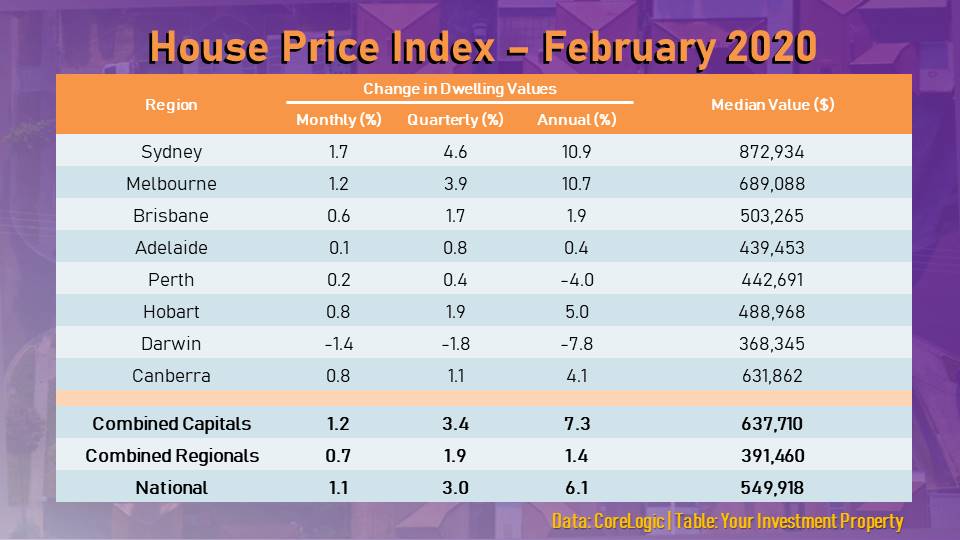Sydney and Melbourne managed to post double-digit annual home-price gains in February, leading the overall growth in national house prices, according to the latest figures from CoreLogic.
The value of homes rose 6.1% annually to $549,918, due to the increases of 10.9% in Sydney and 10.7% in Melbourne.
Sydney's median house value now stands at $872,934, while Melbourne's is currently at $689,088. These two cities offset the weakness felt in Darwin and Perth, where prices declined by 7.8% and 4%, respectively.
On a monthly basis, the growth in house prices stood at 1.1%. All capital cities, except Darwin, posted smaller gains over the month, with Sydney and Melbourne still leading with respective upticks of 1.7% and 1.2%.
"While there is large variability in capital growth from region to region and across the product types, every capital city is showing an upwards trajectory, demonstrating a geographic broadening in the recovery as low mortgage rates and better access to housing credit fuel buyer demand," said Tim Lawless, head of research at CoreLogic Asia Pacific.
Also read: Will coronavirus impact property prices?
Despite the gains it recorded over the month, Sydney prices remained 3.7% below the peak recorded in 2017. However, Lawless said the current pace at which prices are going could result in the overall index reaching a new nominal high over the next two months, with Sydney hitting a nominal recovery by the end of May.
Melbourne has already surpassed its peak in September 2017, joining Brisbane, Canberra, Hobart and Adelaide, where prices also hit record highs. A recent report said Melbourne could hit the million-dollar median house price by 2021.
The numbers also suggest that the dry spell in Perth is finally over. During the month, dwelling values in the city increased by 0.3%, marking the fourth consecutive month of growth.
"Although Perth values are now trending higher, the recovery period is likely to be a long one, with Perth housing values remaining 21.0% below their peak," Lawless said.
While regional areas continue to be in a stable position, the gains they recorded over the same period were not as strong as those in capital cities.
Dwelling values in regional areas grew by 0.7% monthly, 1.9% quarterly, and 1.4% annually, hitting $391,460. On the other hand, capital cities managed to register price gains of 1.2% monthly, 3.4% quarterly, and 7.3% annually, ending the month with a median price of $637,710.
"The diversity across regional Australia is extreme, with drought-affected areas impacting the regional index. Meanwhile, the regional centres adjacent to the largest capitals, as well as coastal lifestyle markets, show a stronger performance," Lawless said.
Check out the table below to see the changes in house prices for the month:
